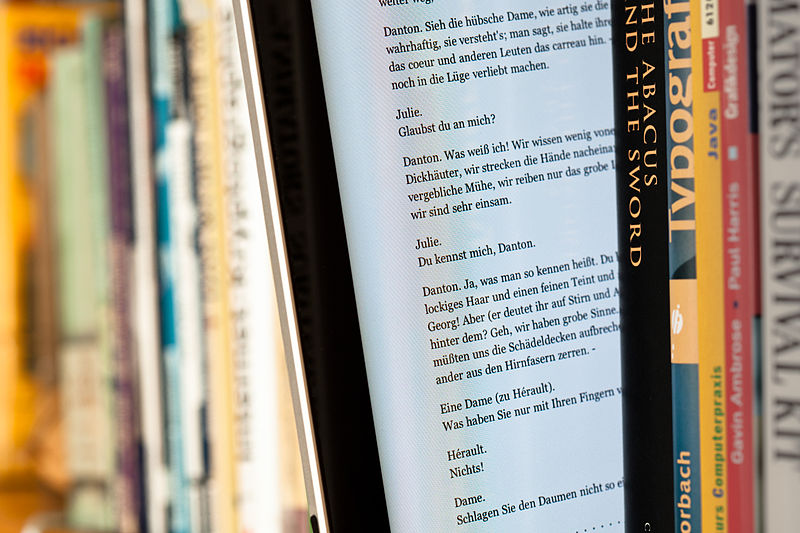Write Your First Nonfiction E-book

Just beginning to write your first e-book? Read this post before penning another word!
How many times have you had an awesome idea for a book but just didn't know how to get started? Not to worry-we've all been there, and we understand the unique challenges you're facing. That's why we put together this nifty guide for writing your first e-book. Review this guide, follow the provided steps, and then revel in the satisfaction of having written your first e-book!
First Things First
You know you have a great idea, but how do you transform that idea into a full-length book? Quite simply, you'll need to create an outline. Don't panic - this outline doesn't need to be as formal as those required in your high school English classes. This outline should serve as your general map; it will guide your writing so the reader can follow you easily as you move from one point to the next.
Making an outline before you sit down to write is helpful for a number of reasons. In addition to helping you clarify your ideas and providing you with an organizational hierarchy, it also allows you to identify logical fallacies in your thought process or areas that might need work.
Nose to the Grindstone
Once you have a solid outline, sit down and write. Yes, we know-this goes without saying, but we'll say it anyway. So often, writers like to think and talk about writing instead of actually writing. You can't edit a blank page, so write your first draft and then fix it. Fix it again. If you're not satisfied, keep on editing until you are.
You'll Need an Editor
Once you feel good about your manuscript, hire a professional editor to review your e-book. Your English teacher mom is a great resource, but she shouldn't be your sole source of advice (unless, of course, she's also a professional editor-that's a different story).
Your best bet is to get in contact with a professional who works with book manuscripts to polish your book for publication. As you're searching for an editor, ask qualified candidates if they also do the interior formatting. If not, hire someone to do that as well.
A Graphic Designer Doesn't Hurt, Either
Hire a graphic designer. Self-publishing gets a bad rap for a reason. Until fairly recently, self-published books were easily identified by their amateur cover designs and shaky interior formatting. The old adage that you can't judge a book by its cover is true - but if the cover is bad, readers won't give the interior an opportunity.
See Also: 5 Design Concepts Writers Must Learn
Things to Avoid when Writing a Nonfiction E-Book
Now that you're familiar with the basic process of writing an e-book, take note of these missteps to avoid:
- Avoid writing a book that serves as your journal. Writing is cathartic and is certainly a great way to work through life's trials. That said, your book needs to serve more purpose than acting as a cathartic exercise for its author.
- Avoid flowery writing. You may be a poet or you may have a PhD, but avoid the temptation to use ten-dollar words. Write in a straightforward, simple manner so readers can understand your message. If your words are too flowery or academic, your writing might scare off (or bore) the majority of your readers.
- Avoid making the book all about you, even if it is an autobiography. Beginning writers forget that the focus of their nonfiction book isn't about themselves, but instead about their readers. Make your book relevant to your readers! Your experiences, life lessons, and opinions matter, but you must focus on the universal truths of those experiences, lessons, and opinions if you want your readers to feel connected to you.
See Also: Creating Content for Audiences of All Ages
Marketing Your E-Book
With real estate, it's all about location. With e-books, it's all about networking, networking, and more networking. More so than with any other medium, word of mouth sells books. As the author of a new e-book, you'll need to get to know and love networking.
Get active on social media, but not just to pitch your book. Get involved in people's lives - their Facebook posts, their tweets on Twitter, their shares on Google+ and LinkedIn. Listen to what they're saying, and like, comment on, and share their posts. Engage with your friends, followers, and fans to build solid relationships.
Think outside the box. Think about the themes in your book and then think about where your readers might be hanging out. Are you writing a cookbook? Search for food festivals and fairs where you might set up a booth to promote your work. Are you writing a book about freshwater fishing? Look for fishing events where you might speak.
Of course, don't forget about Authorgraph. This company makes it possible to autograph digital books! Authors add their books to the Authorgraph database, then readers find them (with your help, and by word of mouth) and request an autograph. You type words with your computer, choose a signature font, or sign it with your stylus, and submit. A digital file is attached to your book with the autograph.
Above all, enjoy the process of writing an e-book. Treat it like the journey it is rather than a task to be completed in a day, and both you and your readers will enjoy the outcome!
To Find More Great Writing and Publishing Resources, See Below:
Project Management Tools for Freelance Writers
Writers, Here's How to Build Your Authorial Brand
Leveraging Your Unique Experience to Get More Jobs
Image courtesy of Maria Elena on Flickr
Published by Tracy R on Tuesday, September 2, 2014 in Authograph, E Book, Nonfiction, Publishing, Writer Marketing, Writing.